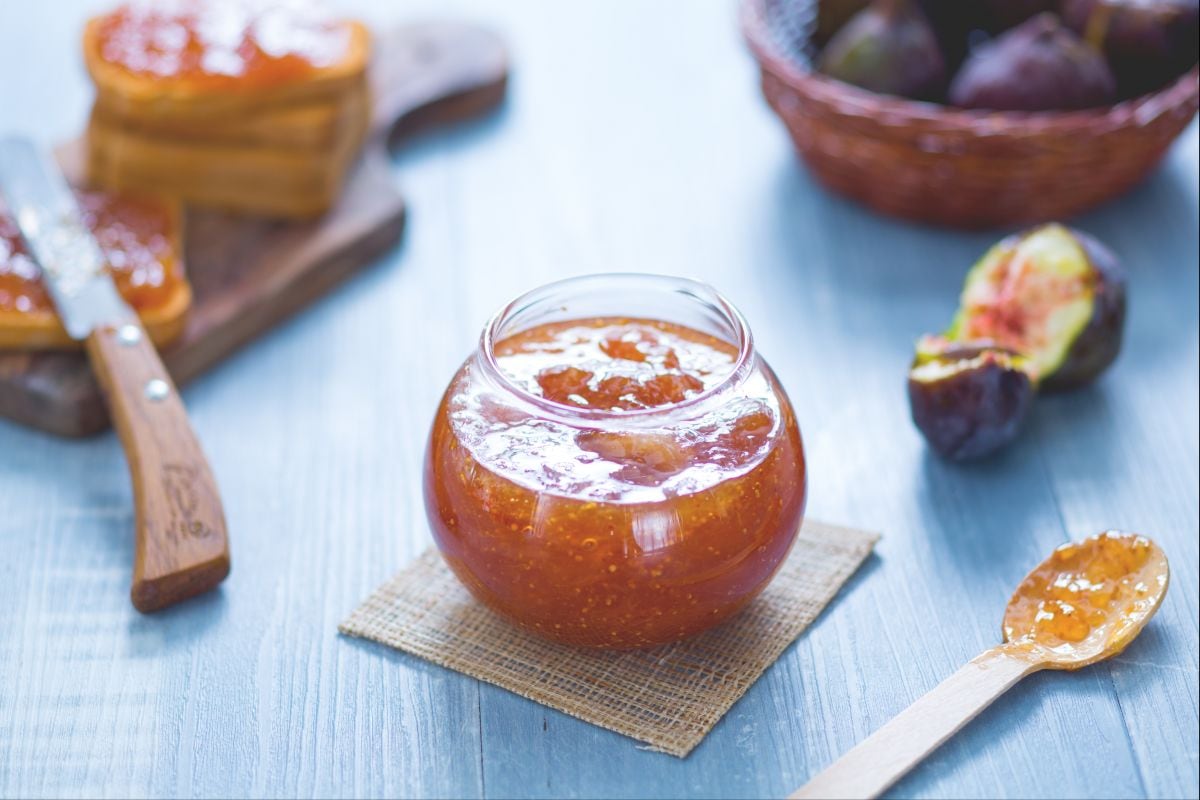Fig and Almond Jam
- Easy
- 55 min
- Kcal 32

At the end of summer, there's a certain excitement in the kitchens, the abundance of fruits and vegetables allows us to make homemade jams and preserves that will pamper us throughout the winter. The scents and flavors of everything nature offers are enclosed in convenient glass jars to be stored in the pantry. After the blackberry jam, today we have chosen to use another of the most loved summer fruits, the black fig, and turn it into a sweet jam! Thanks to their sugary taste, black figs are perfect for our purpose! Once the fig jam is made, you just need to keep it until you decide to open the lid! Whether spread on a slice of toasted bread or used to fill a tart, fig jam will win you over with its sweetness. Its sophisticated flavor also makes it perfect for enriching a platter of aged cheeses. However you decide to enjoy it, this preserve will be a guarantee of homemade goodness!

To prepare fig jam, start by sanitizing the jars and lids that will be used to contain the jam. Wash the jars under running water 1 and place them inside a large pot with high sides. Place a clean cloth between the jars so that they do not hit each other and break during boiling. Fill the pot with water until the jars are completely covered 2. Bring to a boil over low heat for 20 minutes. Then add the jar lids and boil for another 10 minutes. Turn off the heat and let the water cool. When the water is cold, remove the jars and let them dry on a clean cloth 3.

Now proceed with the preparation of the jam. Rinse the figs, remove the stems, and peel them 4. Cut them into quarters and set aside. Peel a lemon using a peeler 6 and set aside the peels.

Cut the lemon in half 7 and extract the juice 8 and set aside. At this point, pour the figs into a saucepan along with the water 9.

Add the sugar 10 and the lemon peels 11 along with the juice. Start heating and remove the surface foam using a skimmer 12 to get a glossy jam when it cools. Continue stirring so that the mixture does not stick.

When the mixture reaches a temperature of 219°F (which you can measure with a kitchen thermometer), turn off the heat and let it cool. A thin film should form on the surface that should be mixed into the jam. Then pour the warm jam into the previously sanitized jars, using the appropriate funnel for jam 13 and making sure to leave 1/2 inch of space from the rim. Screw the sanitized lids on tightly but not excessively 14 and let them cool 15. The heat from the jam will create a vacuum, allowing the product to be stored for a long time. Once the jars have cooled, check if the vacuum has been created correctly: you can press the center of the lid and, if you do not hear the classic "click-clack," the vacuum has been created. Your fig jam is ready to be enjoyed!